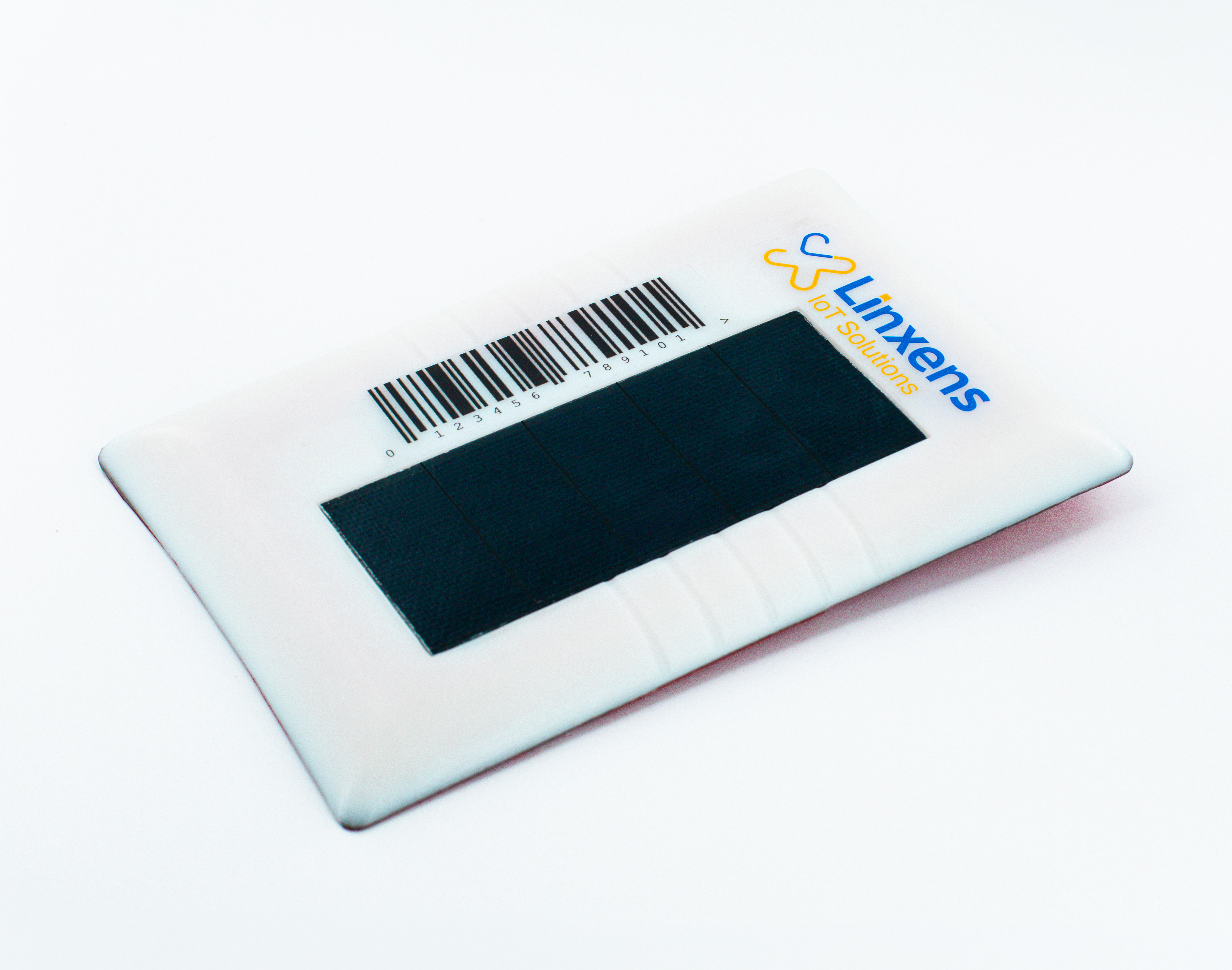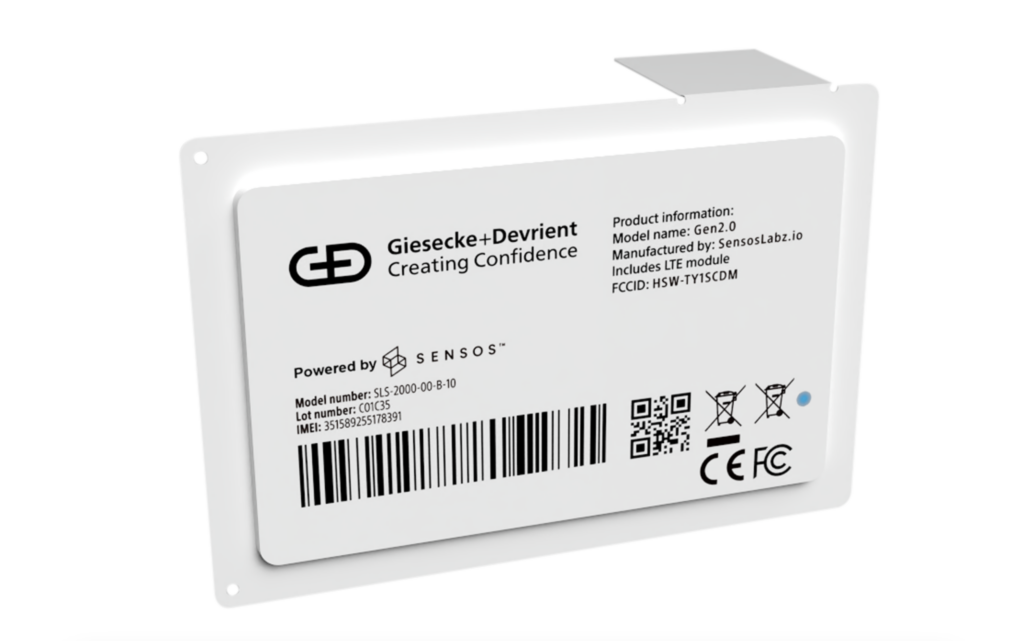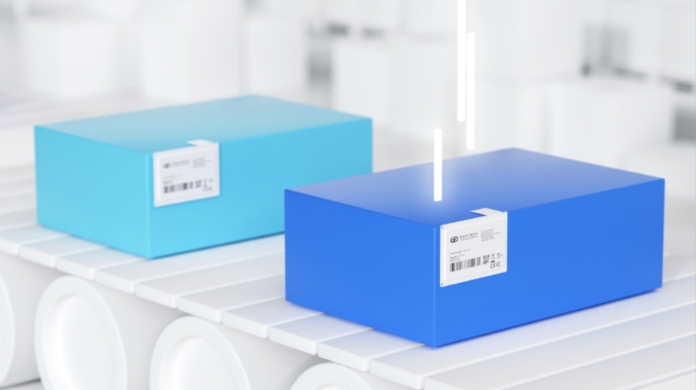Here’s an early bet, straight out of the gate: 2025 will see the rise (at last!) of so-called ‘smart labels’ – potentially printable battery-less IoT silicon-and-SIM stickers that can be attached to low-value packages, even to envelopes, to track their journey and status in the supply-chain. Because the year is not even a week old, and the two most interesting items in the (this) RCR in-tray are about just that, or nearly: France-based electronics developer Linxens has a multi-RAT Sigfox/Wirepas/satellite smart label, apparently, and German SIM and security specialist Giesecke+Devrient (G+D) has a cellular version of the same – sticky electronics labels to “transform any package into an IoT device”.
Expect to see them both at CES in Las Vegas this week (January 7-11) – along with a rush of smart-label demos, likely. Of course, this is a technology that has been talked about for five years, already – at least since pharmaceutical and life sciences firm Bayer started testing a printable NB-IoT-based tracking label, provisionally priced at a couple of euros, with Vodafone, Arm, Altair Semiconductor, and Murata in 2020, in order to monitor fertiliser products through its supply chains. As such, it has been a long wait.
But momentum is clearly building, in parallel with promising developments in ambient IoT, geared to harvest environmental energy and jettison anti-environmental batteries. And the whole smart-labels movement is fertile with green promise; indeed, excitable experiments five years ago with somehow-printable bio-sourced plastics (from bio-degradable fish scales) and recyclable materials, when the Irish SIM-division of Arm (now spun-off as Kigen) and Israeli IoT chip make Altair Semiconductor (now Sony Semiconductor Israel) were pioneering the technology, have started to come good, in parts.
While not printable, the new solution from Linxens, which makes electronics componentry for the telecoms and transport sectors, among a bunch of others, claims to be constructed from bio-sourced plastics and recyclable materials, it says, and uses energy harvesting (“for autonomous IoT operations, minimizing power consumption”). Which – if true, and also quickly and commercially available – is a proper break-through. Linxens has worked with Unabiz, which owns the Sigfox technology, and also chip maker NXP Semiconductor on the proposition. RCR Wireless has fired over a bunch of questions to get further clarity.

Meanwhile, a press note about the new G+D smart label product, which is a collaboration with Israel-based Sensos, the spin-off smart label business from Sony/Altair Semiconductor that worked on the original Bayer project (with G+D rival Kigen, plus module maker Murata and mobile operator Vodafone), says nothing about its environmental creds – in terms of biological materials and recyclability, and energy harvesting. Nor does it say anything about printability, from a standard office printer – as per the original Bayer experiment.
But Sensos and G+D are heavyweights in the field. Sensos, under a different name, was part of the original Bayer project, as discussed. G+D claims to be the market leader for solar-powered trackers with over 180,000 connected devices in the field. The new product is their second-generation smart-label release. Together, they talk about fitting IoT sensing and sense-making – an integrated cellular radio and SIM, plus a bunch of sensors – into a sticky label for tracking and monitoring “parcel delivery and shipping, fleet management, and monitoring the movement of luxury goods”.
These are not two-dollar sensors, perhaps – but they are probably inexpensive, all the same. G+D’s smart label is “ultra-thin and only slightly larger than a credit card”; Linxens’ is the same, more or less (“less than 5mm thick”, and 10×15 cm otherwise.) G+D said its smart label uses “motion sensors that detect movement and acceleration, underpinned by GPS accuracy which has been tested to ensure sub-10m precision in ideal conditions”. It went on: “With customizable reporting frequencies and agile cloud-based configurations, [it] can adapt to specific business needs and allow users to manage, monitor, and ensure the integrity of their assets… whether stationary or on the move.”
It includes an open/close sensor for tamper protection and proof of delivery, and a temperature sensor to monitor and alert about perishable goods. Interestingly, perhaps, G+D says little (nothing) about its label’s connectivity-type, but Sensos in particular has pioneered cellular IoT labels. Equally, the Lixens label combines “flexible connectivity options” with Sigfox (for “cost-effective, large-scale IoT”), Wirepas mesh technology (for “indoor, high-precision” IoT), and satellite connectivity (for “global tracking”) by some undefined means.

Lixens is presenting its solution as part of a new smart-label “program” that “includes all types of networks, including outdoor and indoor needs as well as different levels of precision in tracking”, it said. Laurent Coussonnet of Linxens IoT Solutions, commented: “Our years of expertise in electronic assembly and converting processes have allowed us to develop a product that meets the demands of today’s markets while addressing environmental concerns… {We are] paving the way for greener and smarter IoT solutions with a huge impact on the industry.”
Sharath Muddaiah, head of portfolio strategy for IoT solutions at G+D, said: “The G+D smart label provides a single end-to-end solution, including dedicated service support and warranty from one source. Our industry has seen many-a-solution which, once sold, has limited support, and we are here to set a new trend.”
G+D has a customer already, in the form of Germany-based TNP Global Trade, which is using its smart label for its Track & Pay service, billed as an (“world’s first”) IoT-powered B2B payment solution that integrates shipment tracking with payment processing to trigger an automatic payout when a shipment is received. Joerg Hoerster, founder and chief executive at TNP Global Trade, said: “The smart label’s slick size and active tracking capacity makes it a competitive tracking solution which is why we chose to offer it to our Track & Pay clients.”

